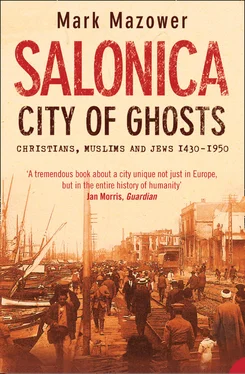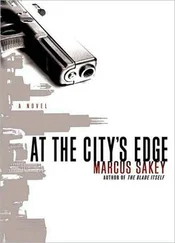Salonicco, Selanik, Solun? Salonicha or Salonique? There are at least thirteen medieval variants alone; the city is an indexer’s nightmare and a linguist’s delight. ‘Is there really a correct pronunciation of Salonika?’ wrote an English ex-serviceman in 1941. ‘At any rate nearly all of us now spell it with a “k”.’ His presumption stirred up a hornet’s nest. ‘Why Saloneeka, when every man in the last war knew it as Salonika?’ responded a certain Mr Pole from Totteridge. ‘I disagree with W. Pole,’ wrote Captain Vance from Edgware, Middlesex. ‘Every man in the last war did not know it as Salonika.’ Mr Wilks of Newbury tried to calm matters by helpfully pointing out that in 1937 ‘by Greek royal decree, Salonika reverted to Thessaloniki’. In fact it had been officially known by the Greek form since the Ottomans were defeated in 1912. 1
It is only foreigners who make things difficult for themselves, for the Greek etymology is perfectly straightforward. The daughter of a local ruler, Philip of Macedon, was called Thessaloniki, and the city was named after her: both daughter and city commemorated the triumph [niki] of her father over the people of Thessaly as he extended Macedonian power throughout Greece. Later of course, his son, Alexander, conquered much more distant lands which took him to the limits of the known world. There were prehistoric settlements in the area, but the city itself is a creation of the fourth-century BC Macedonian state.
Today the association between the city and the dynasty is as close as it has ever been. If one walks from the White Tower along the wide seafront promenade which winds southeast along the bay, one quickly encounters a huge statue of Megas Alexandros – Alexander the Great. Mounted on horseback, sword in hand, he looks down along the five-lane highway [also named after him] out of town, towards the airport, the beaches and the weekend resorts of the Chalkidiki peninsula. The statue rises heroically above the acrobatic skateboarders skimming around the pedestal, the toddlers, the stray dogs and the partygoers queuing up for the brightly-lit floating discos and bars which now circumnavigate the bay by night. It is a magnet for the hundreds who stroll here in the summer evenings, escaping the stuffy backstreets for the refreshment of the sea breeze as the sun dips behind the mountains.
But in 1992, after the collapse of Yugoslavia led the neighbouring republic of Macedonia to declare its independence, Alexander’s Greek defenders took to the streets in a very different mood. Flags proliferated in shop-windows, and car stickers and airport banners proclaimed that ‘Macedonia has been, and will always be, Greek’. Greeks and Slavs did battle over the legacy of the Macedonian kings, and Salonica was the centre of the agitation. In the main square, hundreds of thousands of angry protestors were urged on by their Metropolitan, Panayiotatos [His Most Holy] Panteleimon (known to some journalists as His Wildness [Panagriotatos] for the extremism of his language). The twentieth century was ending as it had begun, with an argument over Macedonia, and names themselves had become a political issue in a way which few outside Greece understood.
The irony was that Alexander himself never knew the city named after his half-sister, for it was founded during the succession struggle precipitated by his death. He had a general called Cassander, who was married to Thessaloniki. Cassander hoped to succeed to the Macedonian throne and having murdered Alexander’s mother to get there, he founded a number of cities to re-establish his credentials as a statesman. The one he immodestly named after himself has vanished from the pages of history. But that given his wife’s name in 315 B C came to join Alexandria itself in the network of new Mediterranean ports that would link the Greek world with the trading routes to Asia, India and Africa.
As events would prove, Cassander chose his spot well. Built on the slope running down to the sea from the hills in the shadow of Mount Hortiatis, the city gave its inhabitants an easy and comforting sense of orientation: from earliest times, they could see the Gulf before them with Mount Olympos across the bay in the distance, the forested hills and mountains rising behind them, the well-rivered plains stretching away to the west. Less arid than Athens, less hemmed in than Trieste, the new city blended with its surroundings, marking the point where mountains, rivers and sea met. It guarded the most accessible land route from the Mediterranean up into the Balkans and central Europe, down which came Slavs [in the sixth century], and Germans [in 1941] while traders and NATO convoys [on their way into Kosovo in 1999] went in the other direction. Its crucial position between East and West was also later exploited by the Romans, whose seven-hundred-kilometre lifeline between Italy and Anatolia, the Via Egnatia, it straddled.
Poised between Europe and Asia, the Mediterranean and the Balkans, the interface of two climatic zones brings Salonica highly changeable air pressure throughout the year. Driving winter rains and fogs subdue the spirits, and helped inspire a generation of melancholic modernists in the 1930s. The vicious north wind which blows for days down the Vardar valley has done more damage to the city over the centuries than humans ever managed, whipping up fires and turning them into catastrophes. A bad year can also bring heavy falls of snow, even the occasional ice in the Gulf: freezing temperatures in February 1770 left ‘many poor lying in the streets dead of cold’; in the 1960s, snowdrifts blocked all traffic between the Upper Town and the streets below. Yet the city also enjoys Mediterranean summers – with relatively little wind, little rain and high daytime temperatures, only slightly softened by the afternoon breeze off the bay. 2
This combination of winter rains and summer sunshine makes for intensive cultivation. Apricots, chestnuts and mulberries grow well here, as do grains, potatoes, cucumbers and melons. Fringed now by the Athens motorway, vegetable gardens still flourish in the alluvial plains – ‘our California’, a farmer once happily told me. ‘There is excellent shooting in the neighbourhood,’ noted John Murray’s Handbook in 1854, ‘including pheasants, woodcocks, wildfowl etc.’ Cutting wide loops through the fields the Vardar river to the west runs low in summer, sinuous and fast in the winter months, too powerful to be easily navigable, debouching finally into the miles of thick reedy insect-plagued marshes which line its mouth. All swamp and water, the Vardar plain in December reminded John Morritt at the end of the eighteenth century of nothing so much as ‘the dear country from Cambridge to Ely’. For hundreds of years it emanated ‘putrid fevers’, noxious exhalations and agues which drove horses mad, and manifested themselves – before the age of pesticide – in the ‘sallow cheeks and bloodless lips’ of the city’s inhabitants. 3
‘From water comes everything’ runs the inscription on an Ottoman fountain still preserved in the Upper Town. Fed by rivers and rains and moisture rising from the bay, water bathes the city and its surroundings in a hazy light quite different from that of parched Attica, softer, stranger and less harsh, shading the western mountains in grey, brown and violet. After days of cloudy and stormy weather, the Reverend Henry Fanshawe Tozer realized ‘what I had never felt before – the pleasure of pale colours’. Artesian wells are dug easily down to the water table which sits just below the surface of the earth, and there are plentiful springs in the nearby hills. Winter rains have etched beds deep into the soil on either side of the town, torrents so quick to flood that well into the nineteenth century they would carry away a horse and rider, or sluice out the poorly buried bones of the dead in the cemeteries beyond the walls. 4
Читать дальше











